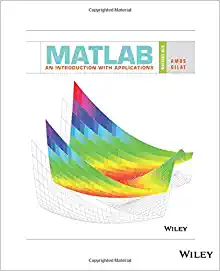Question
Questions: 1.Comment on Nasir's suggestion of not paying dividend. What are the pros and cons of such a policy? 2.Critically evaluate the suggestion of Salem
Questions:
1.Comment on Nasir's suggestion of not paying dividend. What are the pros and cons of such a policy?
2.Critically evaluate the suggestion of Salem of the irrelevancy of dividend and its impact on the value of the company.
3.Explain with an example the opinion of Ali "Why don't we use homemade dividends"
4.Evaluate the two financing approaches suggested by Salem and explain the consequences of the capital structure of the company on both alternatives.
5.Apply the percent of sales method (EFN) to compute the external fund needed under the current condition of not paying dividends. Advise the management on the suitable dividend theory.
Case Study :
Al Wathba Case Study
It was the end of the fourth quarter, the financial statements had been prepared and circulated to the directors of Al Wathba Corporation (see table 1 and 2). The firm's revenues had surpassed the previous quarter's revenues by over 20% and the annual sales were approximately 15% higher as well and expected to be 20% higher next year than of the current year with same expansion in assets and liabilities as the company is working under full capacity. More importantly, the net income figures of the year were up by more than 25%. The restructuring and cost cutting seemed to have paid off. Needless to say, the mood of the corporate headquarters in Al-Ain was upbeat and full of cheer. The big question weighing heavily on everyone's minds was "When will they ever pay a dividend?"
Sultan Al Mazroui, a retired engineer, founded Al Wathba Corporation 12 years ago in his hometown Alain with AED 500,000 of his own money and rest borrowed from Abu Dhabi National Bank (ADNB). The business was slow and it took the company almost 3 years before it made its first profit. Soon thereafter, having registered in Dubai Financial Market (DFM), by issuing 1,000,000 shares at AED 5 per share and Al-Wathba began to do well. Although the company made good profits over the last 4 years, the board of directors had decided to retain all of the earnings and reinvest them into the business. They did this for a couple of years and then owning to a downturn in the economy, financial crisis, and excessive expenses, the company ended the last 2 years in the red. Luckily, the company had not accumulated excessive amounts of debt and was able to withstand the difficult time quite well. During this down period the stock price went from a high of AED 25 to a low of AED 2. It was currently trading at AED 8 per share with a price-earning ratio P/R of 8.33.
As the directors gathered together for the meeting, Ahmed, the Chief Executive officer, knew that this was going to be an interesting meeting given the significantly different backgrounds, personalities, and beliefs of the directors. During his introductory remarks, the word dividend appeared and Mr. Nasir raised his hand, "Why fix it, I think we should continue retaining all our earnings and use the money for future investments and pay dividends when we raise AED 1,000,000 for the planned expansion". Abdulla objected, "I prefer to dividends from now on, our shareholders may not be more patient".
Mr. Salem, who had a degree in finance from one of the schools in the country, and had read about Modigliani and Miller's (M&Ms) "dividends irrelevancy" preposition asked himself "Will it make a difference to pay or not?, What would be the impact on the value of the company?". He raised his hand and said "It does not matter" but all members were reluctant and asked him to explain how.
Ali, who had kept silent through the discussion, finally broke in, "Why don't we use homemade dividends"
As the company is planning to increase sales by 25% next year, assets have to increase by AED 2,500,000 and Salem stated two suggestions:
1.To finance this increase only from internal resources.
2.To borrow 60% and finance the rest internally.


Step by Step Solution
There are 3 Steps involved in it
Step: 1

Get Instant Access to Expert-Tailored Solutions
See step-by-step solutions with expert insights and AI powered tools for academic success
Step: 2

Step: 3

Ace Your Homework with AI
Get the answers you need in no time with our AI-driven, step-by-step assistance
Get Started


